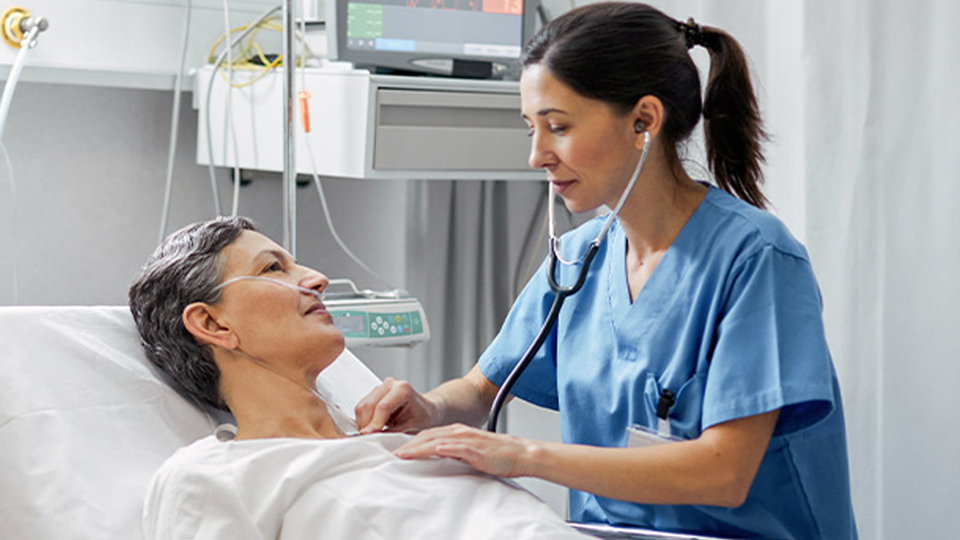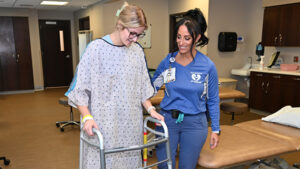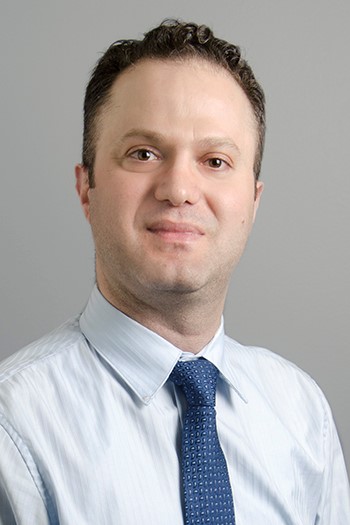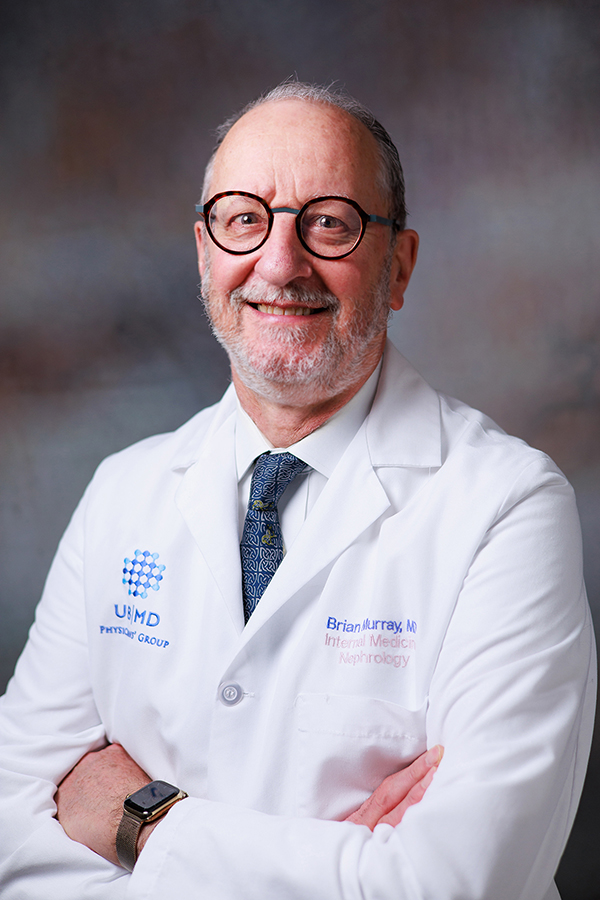Kidney Dialysis
For patients facing end-stage kidney failure, kidney dialysis serves as an artificial replacement for the body’s kidney functions, including waste removal. To serve our patients across a spectrum of needs, we offer outpatient and inpatient dialysis, as well as options for kidney dialysis at home. No matter where you’re treated, our team is committed to making dialysis as comfortable, convenient, and relaxing as possible, and offering amenities to improve the experience.
Outpatient Kidney Dialysis
With the opening of the Regional Center of Excellence, Western New York outpatients now have access to the region’s largest and most up-to-date kidney dialysis unit.
Located on the ground floor of the ambulatory care building, which is one of the newest buildings on the ECMC campus, the dialysis unit is designed for easy access and patient convenience. We also offer four isolation treatment stations for patients with unique medical needs. For the comfort of our patients, flat-screen TVs are located at every treatment station. The facility also includes built-in Hoyer lifts for patients with limited mobility.
At ECMC, we believe in a nursing-care model. Patients will always be cared for by an RN or LPN throughout every dialysis treatment. The unit is also staffed by:
- A medical director
- A dietitian who will recommend an optimum renal diet for you
- A social worker who can both help you access services to ease your adjustment to your renal condition during treatments, and arrange for your dialysis treatments when you travel out of town
We are a patient-centered unit, with a Patient Advocacy/ESRD Grievance Committee that meets every other month to voice the needs, issues, and concerns of our patients on their behalf.
Our outpatient kidney dialysis unit is designated as a 5-Diamond Patient Safety Facility recognized for genuine concern for the quality of patient safety and extra steps taken to ensure the best for patients.
For Dialysis Patient Convenience and Easy Access to Care
For convenience and ease of access for ECMC Outpatient Dialysis Center patients, six parking spaces have been designated and specifically marked in the DKM Circle (between the David K. Miller and Ambulatory Center buildings) on the ECMC Health Campus.
A special tag is required to park in these designated spaces, and it must to be hung from dialysis patients’ rear-view mirrors. The parking tags are sent by certified mail to dialysis patients.
Inpatient Kidney Dialysis
ECMC also offers a new state-of-the-art inpatient dialysis unit within the Center, ensuring that patients throughout ECMC never have to leave the campus to get the treatment they need.
Our inpatient kidney dialysis unit features six stations, offering a similar level of comfort and convenience as our outpatient facility.
Home Kidney Dialysis
Home hemodialysis (HHD) is an excellent option for certain patients. In fact, HHD is actually performed more frequently than traditional, in-center hemodialysis. The benefits include improved well-being and fewer complications during treatment.
Patients sometimes prefer HHD for a variety of reasons, including:
- Convenience of being treated in the comfort of their own home
- Shorter treatment times if kidney dialysis is required daily
- Treatment can be administered with the help of a partner
- Maintenance of an active lifestyle at work, school, and while traveling
- Allows a more liberal renal diet compared to that of an outpatient dialysis patient
If you have end stage renal disease (ESRD), you and your nephrologist can discuss whether this option is a good fit for your lifestyle.
ECMC offers our patients two different kinds of kidney dialysis: hemodialysis and peritoneal dialysis.
Hemodialysis
During hemodialysis, tubes connect the patient to a machine that filters the blood. Hemodialysis is usually done three times a week for three to four hours each time. It is usually done at a dialysis center, although in some cases, families can be trained to do the treatment at home. Hemodialysis patients must adhere to a strict diet, restrict their fluid intake, and may feel unwell, especially after dialysis.
Peritoneal
Peritoneal dialysis uses the abdominal cavity membrane (the peritoneal membrane) to filter the blood. To receive this type of dialysis, patients have a tube placed permanently into the abdomen, During treatment, a fluid called dialysate is infused into the abdominal cavity. Waste and extra fluid move into the dialysate and, after a few hours, the fluid is drained out. This is called an exchange. Patients can do four to five exchanges per day, or the exchanges may be done at night with the help of a machine that cycles the exchanges while the person is sleeping.
Additional Info
LOCATION
Regional Center of Excellence for Transplantation and Kidney Care Outpatient Kidney Dialysis Ground Floor
Barry & Deanna Snyder Dialysis and Medical Office
462 Grider Street
Buffalo, NY 14215
CONTACT
Toll-Free
(888) 894-9444
Dialysis
(716) 898-1400






